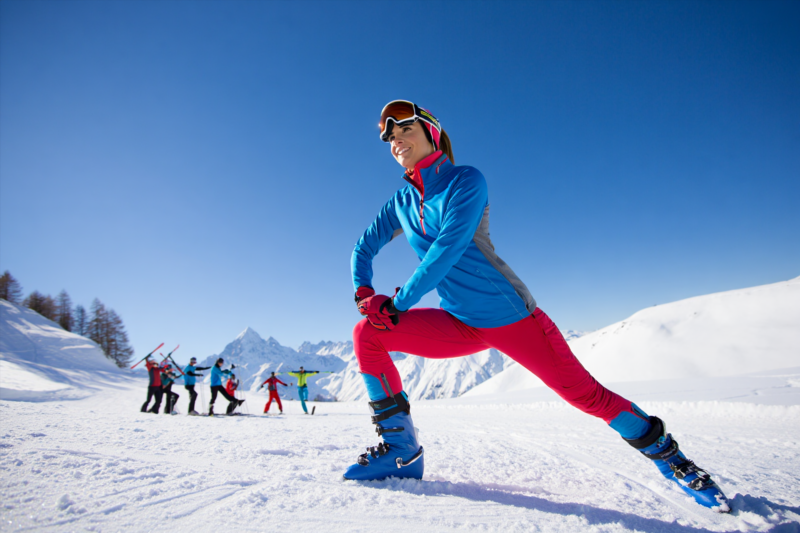Skiing is an exhilarating sport that combines speed, balance, and endurance. However, without proper preparation and recovery routines, skiers are at increased risk of injuries such as muscle strains, ligament tears, and joint issues. Implementing effective warm-up and cool-down routines not only enhances your performance but also plays a vital role in injury prevention. This guide provides expert insights into the best practices for warming up and cooling down, ensuring a safer and more enjoyable skiing experience.
Why Are Warm Up and Cool Down Important for Skiers?
Engaging in proper pre- and post-skiing activities offers multiple benefits:
- Prevents injuries: Reduces muscle stiffness and prepares joints for the physical demands.
- Enhances performance: Improves flexibility, strength, and coordination.
- Accelerates recovery: Aids in muscle relaxation and reduces soreness.
- Boosts confidence: Warm muscles can help you ski with more control and stability.
Understanding these benefits underscores why every skier—whether a beginner or pro—should incorporate structured routines into their skiing regimen.
Best Warm Up Routines for Skiers
Effective warm-up activities prime your muscles and joints, making your body ready for physical exertion on snow. Here are key strategies:
1. Dynamic Stretching
Avoid static stretches before skiing. Opt for dynamic stretches that mimic skiing movements:
- Leg swings (forward/backward and side-to-side)
- Arm circles
- Hip circles
- Lunges with torso twists
Tip: Spend 5-10 minutes performing these exercises to increase blood flow and flexibility.
2. Cardiovascular Activation
Engage in light cardio to elevate your core temperature:
- Jogging in place
- Jump rope
- Brief brisk walking
Duration: 5 minutes is sufficient to facilitate muscle warming without fatigue.
3. Specific Skiing Movements
Gradually simulate skiing motions:
- Side lunges
- Ankle rotations
- Squat holds (with controlled movement)
Purpose: Prepare your legs, hips, and core—areas heavily engaged during skiing.
4. Warm-up on the Slopes
If possible, start on easier slopes for a gentle warm-up:
- Take slow, controlled runs
- Focus on technique rather than speed
- Gradually increase intensity
This allows your body to adapt gradually, reducing injury risk.
Best Cool Down Routines for Skiers
Post-skiing routines help your muscles recover and reduce soreness. Here’s how to cool down effectively:
1. Light Aerobic Activity
Reduce intensity with a slow, steady ride or walk:
- Walk or gentle snowshoe
- Slow skiing on flat terrain
Duration: 5-10 minutes to gradually lower your heart rate.
2. Static Stretching
Focus on muscles used during skiing:
| Muscle Group | Suggested Stretches |
| Quadriceps | Standing quad stretch, pulling your ankle toward your buttocks |
| Hamstrings | Seated forward bend, reaching for your toes |
| Calves | Standing calf stretch against a slope or wall |
| Hip Flexors | Kneeling lunge stretch |
| Back and Shoulders | Child’s pose, shoulder stretches |
Hold each stretch for 15-30 seconds, breathing deeply to enhance relaxation.
3. Hydration and Nutrition
Replenish lost fluids and nutrients:
- Drink plenty of water
- Have a snack rich in protein and carbs to support muscle repair
4. Rest and Recovery
Allow your body adequate time to recover, especially after strenuous days, to prevent overuse injuries.
Frequently Asked Questions (FAQs)
How often should I warm up and cool down before and after skiing?
Aim to spend at least 10-15 minutes on warming up before hitting the slopes and similar time cooling down afterward. Consistency enhances overall injury prevention.
Can these routines prevent specific injuries?
While no routine guarantees complete prevention, proper warm-ups significantly reduce the risk of muscle strains, ligament injuries, and joint issues common in skiing.
Is it necessary to stretch if I feel tight?
Yes. Gentle stretching can improve flexibility and range of motion, helping you ski safely. However, avoid overstretching or bouncing movements.
Are there specific routines for beginners vs. advanced skiers?
Basic routines are suitable for all levels. Advanced skiers may incorporate more sport-specific drills, but the core principles remain the same.
Final Thoughts: Enhance Your Skiing Safety Today
Implementing structured warm-up and cool-down routines is a simple yet powerful way to elevate your skiing safety and enjoyment. By preparing your muscles and joints before hitting the snow and helping them recover afterward, you reduce injury risks and maximize your performance on every route.
Start today: Incorporate dynamic stretches and gentle aerobic activities before skiing, and don’t skip static stretches and hydration afterward. Your body—and your love for the snow—will thank you.
Ready to take your skiing to the next level? Explore our comprehensive platform for expert workout programs, race insights, and gear recommendations tailored for every level. Enhance your winter experience and ski with confidence!
